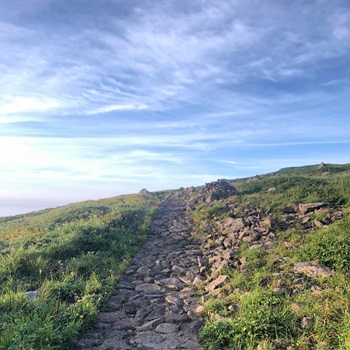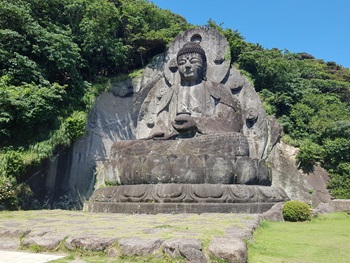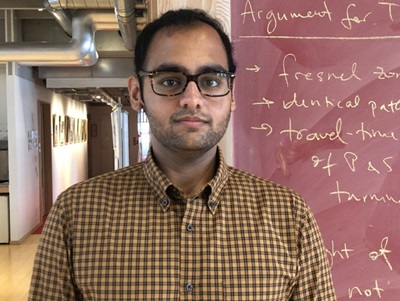SUMMARY:
My name is Havishk Tripathi, and I spent nearly 4 months at ELSI during summer of 2019 working on applying Machine Learning and Neural Network technology to astrobiology and atmospheric chemistry. The aim of the collaboration here is to create and predict reaction rates for other complex chemistries that normally can’t be calculated.

Views from Gas-San, a hike located in remote Yamagata.
I’m a senior undergraduate student at Rutgers University studying Chemical Engineering and Geology. My previous work experience was at the Rutgers NASA ENIGMA team working as a field palaeontology researcher for a few months, and at NIST working in novel chemical detection methods for SVOC compounds. Most of my experience is in chemical detection, geochemistry in an anaerobic sense and applying engineering and physics to explore unexplained chemistry.
Dr. Henderson Cleaves at ELSI invited me to Japan, through the ‘Young Scientist Program at the Blue Marble Space Institute of Science’ in the USA. Following my first communication with Dr Cleaves, I faced an interview, while I was applying for a grant to travel to Tokyo the date before it was due. The preparation was a short notice on so many fronts. However, everything fell into places well and NASA kindly awarding me the Early Career Collaborator Award, while ELSI was able to supply funding for me as well. This opportunity opened a door for me to gain a lot more knowledge working with Dr. Mattheiu Laneuville, Dr.Henderson Cleaves, and Dr.Sebastian Danielache in Tokyo.
The overall scope of the work was to develop a neural network that can work to discover and product atmospheric chemistry reactions that can be extrapolated to various atmospheric models. I had used Matlab prior to this, and while my understanding of mathematics was strong, I had never programmed in my life before. With new technology like Neural Networks as well as applying it in a field where it virtually has never been used, it was daunting. But, as my advisors guided me through the process, helping me to understand the path to each solution, I was able to create a neural network that can predict chemical reaction rates. This can be used on various atmospheric models and can practically help to understand or improve current atmospheric chemical networks.
As one of the very few, truly connected and established research centres to study astrobiology, ELSI was a unique and exciting place to work. I was evident that the collaboration was everywhere at ELSI. All the invited speakers encouraged students to ask questions during the sessions, having group sessions to promote collaborations or to discuss new research papers. It’s the only place I have ever seen where high-level biologists and chemists can sit at the same table, drink coffee, and try to understand each other’s research to create unseen concepts.
Outside of ELSI, Japan is as expansive as you make it out to be. You can remain in the nooks and comfortable cafes of Tokyo, of which there is an abundance of. If you want some peace and quiet, you can travel to different shrines and nature-reserved areas that you can relax and unwind from the work hard, play hard lifestyle. If you are like me and love to travel to see nature or culture, Japan is an amazing country to do that in. You can travel to anywhere outside of Tokyo as a day trip, taking the convenient rail system, and explore a different world instead. In my time in Tokyo, one of the best memories I have is spending a few days hiking in the mountains near Niigata. Staying at a Buddhist temple, relaxing, and hiking in challenging terrain was exactly the type of break I needed. Afterwards, soaking in an onsen to remove my aches and pains made the journey all the better.

A famous statue of buddha, located on Mount Nokogiri.
I will finish my undergraduate degree in May of 2020, then apply do my PhD focusing on Planetary Geobiology. I’ll also be applying for grants and scholarships to fund more research ideas I have, related to chemical exoplanetary detection, astrobiology engineering projects, and interesting collaborations.

AUTHOR: Havishk Tripathi, Rutgers NASA ENIGMA Team.
AUTHOR'S BRIEF:
Havishk Tripathi is a senior undergraduate student at Rutgers University, studying Chemical Engineering and Geology. His current lab is under Paul Falkowski at the NASA Enigma team. Outside of exploring astrobiology and exoplanets, his main interests are travelling, hiking mountains, and eating ice cream. If you’d like to follow his updates, you can visit his website at https://havi.space/
